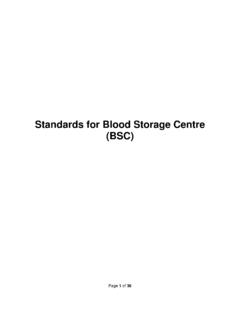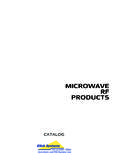Transcription of Qualification of temperature- controlled road …
1 ` WHO Vaccine Qualification of temperature- controlled road vehicles Technical supplement to WHO Technical Report Series, No. 961, 2011 Annex 9: Model guidance for the storage and transport of time and temperature sensitive pharmaceutical products January 2014 World Health Organization 2014 WHO Press, World Health Organization, 20 Avenue Appia, 1211 Geneva 27, Switzerland (tel.: +41 22 791 3264; fax: +41 22 791 4857; e-mail: Requests for permission to reproduce or translate WHO publications whether for sale or for noncommercial distribution should be addressed to WHO Press, at the above address (fax: +41 22 791 4806.))
2 E-mail: The designations employed and the presentation of the material in this publication do not imply the expression of any opinion whatsoever on the part of the World Health Organization concerning the legal status of any country, territory, city or area or of its authorities, or concerning the delimitation of its frontiers or boundaries. Dotted lines on maps represent approximate border lines for which there may not yet be full agreement. The mention of specific companies or of certain manufacturers products does not imply that they are endorsed or recommended by the World Health Organization in preference to others of a similar nature that are not mentioned.
3 Errors and omissions excepted, the names of proprietary products are distinguished by initial capital letters. All reasonable precautions have been taken by the World Health Organization to verify the information contained in this publication. However, the published material is being distributed without warranty of any kind, either expressed or implied. The responsibility for the interpretation and use of the material lies with the reader. In no event shall the World Health Organization be liable for damages arising from its use. The named authors alone are responsible for the views expressed in this publication.
4 Technical Supplement: Qualification of temperature- controlled vehicles 2 Acknowledgments The author of this document is Richard Lawton, Technical Director, Cambridge Refrigeration Technology, Cambridge, UK. Technical Supplement: Qualification of temperature- controlled vehicles 3 Contents Acknowledgments .. 2 Contents .. 3 Abbreviations .. 5 Glossary .. 6 1. Introduction .. 8 Requirements .. 8 9 Verification .. 9 Validation .. 9 Target readership .. 10 2. Guidance .. 11 Associated materials and equipment.
5 11 Preliminary construction validation .. 11 temperature- controlling equipment .. 11 Insulation equipment .. 12 Performance checks .. 12 Field shipment test .. 12 Purpose .. 12 Loading .. 12 Temperature probe placement .. 12 Test procedure .. 13 Acceptance criteria .. 13 temperature- control failure test .. 13 Purpose .. 13 Loading .. 13 Temperature probe placement .. 14 Test procedure .. 14 Acceptance criteria .. 14 Documentation .. 15 Designation of the vehicle .. 15 Results of the Qualification .
6 15 Technical Supplement: Qualification of temperature- controlled vehicles 4 Vehicle Qualification failure .. 15 Calibration .. 15 References .. 16 Annex 1 - Placing data-loggers or temperature sensors .. 17 Revision history .. 18 Technical Supplement: Qualification of temperature- controlled vehicles 5 Abbreviations K Difference in absolute temperature ATP Agreement on the International Carriage of Perishable Foodstuffs and on the Special Equipment to be Used for such Carriage: - UNECE cGMP current Good Manufacturing Practice EDLM Electronic Data Logging Monitor EN XXXX European Norm (standard) IQ Installation Qualification OQ Operational Qualification PQ Performance Qualification SOP Standard Operating Procedure TTSPP Time and temperature- Sensitive Pharmaceutical Product Technical Supplement: Qualification of temperature- controlled vehicles 6 Glossary Electronic Data Logging Monitor (EDLM).
7 A small portable device that measures and stores temperature at pre-determined time intervals by means of an electronic sensor. They have programmable alarm capabilities, integrated displays, and can create reports and graphs which may be permanently stored, shared and analysed via proprietary hardware, software, desktop application or through hosted databases. Coefficient of heat transfer: (The U value, also referred to as the K coefficient in the ATP Agreement): The overall heat transfer of the equipment, defined as the heating power or cooling capacity, W, per degree temperature difference, T, between the internal and external surfaces over the surface of the body, S.
8 The units are W/(m2K) and its formula is below. TSWK = Installation Qualification (IQ): The process of obtaining and documenting evidence that equipment has been provided and installed in accordance with its specifications and that it functions within predetermined limits when operated in accordance with the operational instructions. Operational Qualification (OQ): Documented verification under controlled conditions that the equipment or systems, as installed or modified, perform as intended throughout the anticipated operating ranges1.
9 Performance Qualification (PQ): Documented verification that that the equipment and ancillary systems, as connected together, can perform effectively and reproducibly based on the approved process method and Pharmaceutical product: Any product intended for human use or veterinary product intended for administration to food producing animals, presented in its finished dosage form, that is subject to control by pharmaceutical legislation in either the exporting or the importing state and includes products for which a prescription is required, products which may be sold to patients without a prescription, biologicals and vaccines.
10 It does not, however, include medical devices3. Standard Operating Procedure (SOP): A set of instructions having the force of a directive, covering those features of operations that lend themselves to a definite or standardized procedure without loss of effectiveness. Standard operating policies and procedures can be effective catalysts to drive performance improvement and improve organizational results. 1 PDA Technical Report No. 39: Guidance for Temperature controlled Medicinal Products: Maintaining the Quality of temperature- Sensitive Medicinal Products through the Transportation Environment, 2007.
















